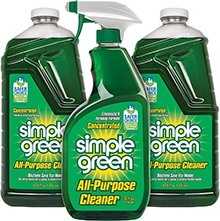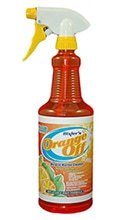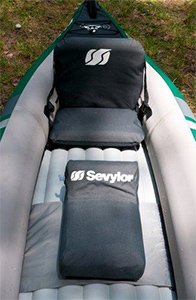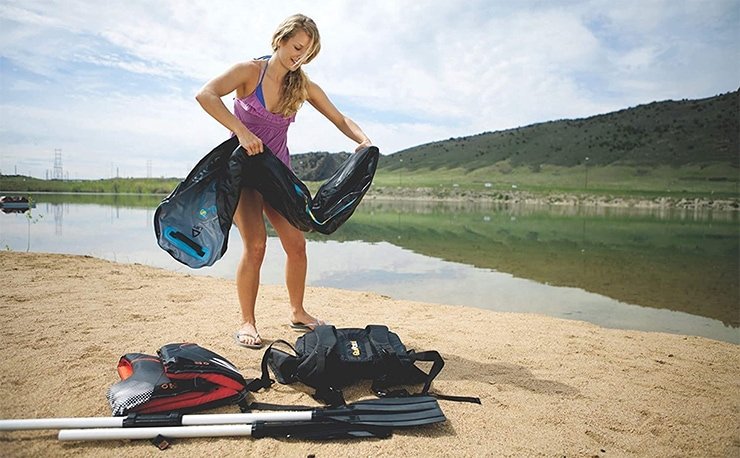The way you take care of your inflatable kayak will directly impact the lifespan of your kayak. Saltwater, sand, mold and mildew, plus improper storage are three of the main culprits that could cause damage.
Today, I’ll share with you my favorite tips to extending the life of your kayak through proper cleaning and storage. I’ll break down how to properly clean your boat, how to clean inflatable kayak accessories, and how to properly fold and store your gear away. Let’s get started.
Key Takeaways
- You should rinse your inflatable kayak with fresh water after each use to remove saltwater, sand, and debris.
- Wash your kayak thoroughly with fresh water and mild soap after every few uses.
- Avoid storing your kayak in direct sunlight or high temperatures to prevent damage from UV rays.
- Always store your kayak in a cool, dry place to prevent mold and mildew growth.
- Avoid folding or creasing your kayak when storing it to prevent damage to the material.
Should you Clean Your Kayak Inflated or Deflated?
You can clean your inflatable kayak both inflated or deflated. However, the method that works best all depends on your situation.
For example, if you’re going to be transporting your kayak back home for a thorough clean, then you might want to do a quick rinse while it’s still deflated. Then, you can take it home and give it a more thorough rinse.
If you’re going to be storing your inflatable kayak inflated, then it’s probably best to just keep it inflated as you clean it. This will save you time so that you can store it a lot quicker.
Also read: Are inflatable kayaks safe?
How to Quickly Clean Your Kayak for Transport
For many kayakers, including myself, I like to do a quick rinse of my inflatable once I exit the water. The purpose of doing a quick clean of your kayak before you transport it is to simply get rid of any loose sand, dirt or grime.
Your goal is to try and soak up all the water and to dry the kayak as much as you can, so that you don’t have excess water dripping in the storage bag.
When doing a quick clean, your goal is not to get it squeaky-clean. Instead, get rid of any visible gunk and then dry it up as much as possible.
It can be helpful to bring along two or three towels that you keep in your car. Give one towel a quick soak in the water, wring it out, and use it to wipe down your kayak. Pay attention to the hull of the boat and get rid of any mud or dirt it may have collected.
Use your second towel to give your kayak a quick scrub using fresh water. Don’t use any soaps or other cleaners at this stage. Lastly, with your final dry towel, your goal is to wipe away any extra water on the inside and outside of your boat.
Once you’ve done a rough cleaning of your boat, you can now fold it, pack it, and put it away in its transport bag. If you have a little bit of water in your transport bag, try to wipe it away. It’s not really a big deal if a bit of water drips into the bag.
Once you get home, you’ll be able to do a more thorough clean before you store your inflatable kayak away. Just make sure you drain all excess water out of the boat after you wash it.
Related: 16 Different types of kayaks.
How To Clean Your Inflatable Kayak for Storage
Now that you’ve gotten home, it’s time to do an in depth clean of your kayak. Whether you’re rolling up your kayak for the long term, or are just putting it away for the time being, it’s important to do a good job cleaning your kayak (as well as storing it in a dry place).
If you’ve been kayaking in salt water, the harsh minerals in the water can end up damaging the outer layer of your kayak. Most inflatable kayaks have a UV protective coating on them to help extend the life of the boat. If you don’t do a good job rinsing away any residue that you might have collected while out kayaking, then you could ruin this coating.
You can do your in depth clean with your boat inflated or deflated. If you’re going to clean your kayak when it’s deflated, just be sure that all the air valves are closed. This will prevent any water from sneaking into the kayak while you’re cleaning it.
Also read: Are inflatable kayaks good?
Remove Everything You Can
Start by removing any additional gear from your kayak. This includes gear like a removable spray skirt, removable seat, or removable footrest. The same goes for any attachments like kayak cooler or fishing rack attachment.
Related: Are inflatable kayaks good for fishing?
Even if you plan on using your kayak again later on in the week, you want to take out the attachment so that you can do a good job cleaning. Any other components like a removable floor should also be removed as well.
You may also like: What size kayak do I need?
Remove Any Loose Dirt
Now it’s time to inspect the inflatable kayak to see if there is any loose or stubborn dirt and mud on it. Use a soft bristle brush or a cleaning rag to gently lift away the stains.
If you have more stubborn stains, don’t worry about trying to remove them. The last thing you want to do is scrub your kayak’s material really harshly as this could ruin the coating on your kayak.
It’s okay and natural for your kayak to collect stubborn stains and streaks overtime. If these stains won’t leave, don’t worry too much about it.
Spray Your Kayak With Freshwater
Now it’s time to coat your inflatable boat with some fresh water. I like to lay my kayak on a soft grassy area and then spray it down with fresh water from a hose. You can also use a bucket of freshwater and a rag to clean the kayak with.
Get the freshwater on every part of the boat, both inside and outside. If you’ve been kayaking in freshwater, then a freshwater rinse is usually all you need in order to get rid of any other gunk you may have kayaked in.
If you know you’ve been kayaking in an area where there is a lot of algae and your kayak feels a little slimy, then you can clean the kayak using a little more than just fresh water.
Use Mild Soap and a Soft Bristle Brush
To really get rid of the grime that your kayak might have collected you can use a lukewarm mixture of soap and freshwater. If you kayak in freshwater, then you can skip this step. However, if you kayak in saltwater, don’t skip the soapy mixture.
Use a towel or a soft bristle brush to scrub your kayak down with the soapy water. Make sure to get inside of the cockpit as well when you clean as water from the lake or river will usually sneak into the cockpit through drips from the paddle.
Flip your kayak over and use the soapy water to scrub down the base of your kayak too. Of course, don’t forget to get the side chambers as well.
Do a Final Rinse
Now that you’ve done a really good scrub of your inflatable kayak, it’s time to rinse it off. With your final rinse, simply use fresh water in order to remove the solution. It can be helpful to stand your kayak up in order to rinse it off really well.

Use Safe Cleaning Products
The best way to clean your kayak is by using a mild detergent or a dish soap. Generally, you want to make sure that the pH level of whatever cleaning solution you’re using isn’t higher than 11.5.
This will keep you from damaging the outer layer of your kayak. Generally mild soaps and detergents are suitable for cleaning inflatable boats and kayaks, but you can also consider the following:

- Citrus-based cleaners
- Biodegradable cleaners like Simple Green
- Citrus cleaners like Bixler’s Orange Off
- Cleaners that also offer UV protection
- A simple vinegar mixture of distilled white vinegar and fresh water.
Avoid Cleaning Your Kayak With These Products
Some chemicals and cleaners are too harsh to use on your kayak’s surface. As a general rule of thumb, steer clear of using the following types of cleaners when cleaning your inflatable boat:
- Ammonia
- Chlorine
- Acetone
- Solvents
Along with avoiding these harsh cleaners, also make sure that you never use rough cleaning pads. A soft bristle brush is generally as rough as you can go when scrubbing down your inflatable kayak.
Never use harsher bristle brushes made of metal. They can scratch, damage, and even rip into your kayak’s surface.
Drying Your Inflatable Kayak
The drying process is perhaps the most important part to cleaning your kayak. Here are some of my favorite methods to dry my inflatable kayak. The method that will work best for you really depends on your location, and whether or not you have the space or ability to use that method.
Use a Towel
Using a towel to dry your kayak is the easiest and most straightforward way to get rid of all the moisture. Once you’ve gone through and done a complete wipe down of your kayak, go over it again with a fresh, dry towel to make sure that you’ve collected all the excess moisture.
Let Your Kayak Air Dry

Letting your boat air dry is another great way to get rid of any excess water. Some great places to hang up a kayak are decks and backyard where a gentle breeze and the open air can dry it out.
Avoid UV damage to your boat by keeping it out of the sun for long periods. Too much sun exposure to harmful UV rays can cause damage to your boat’s outer surfaces. This is especially the case if you routinely dry out your boat in the sun.
One of the easiest ways to air dry your boat is by hanging it up in a garage or in an area where the breeze can come through without having to worry about sun exposure.
How Dry Does It Need to Be?
Your kayak should be totally and completely dry before you store it away. Even a little bit of water or moisture on your boat could lead to mold and mildew. Mold and mildew can especially be a danger if you pack up your kayak and then store it away for an extended period of time.
Before you pack up your kayak, run your hand along the seam, inside the boat, and underneath it to make sure that everything is nice and dry.
Related: Learn the difference between inflatable kayak and boat.
Conclusion
The best way to extend the life of your kayak is properly cleaning it and preparing it for storage. I hope my tips on how to clean your inflatable boat have helped you with your own cleaning process. Be sure to share some of your favorite cleaning tips in the comments section below!

